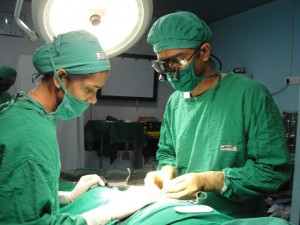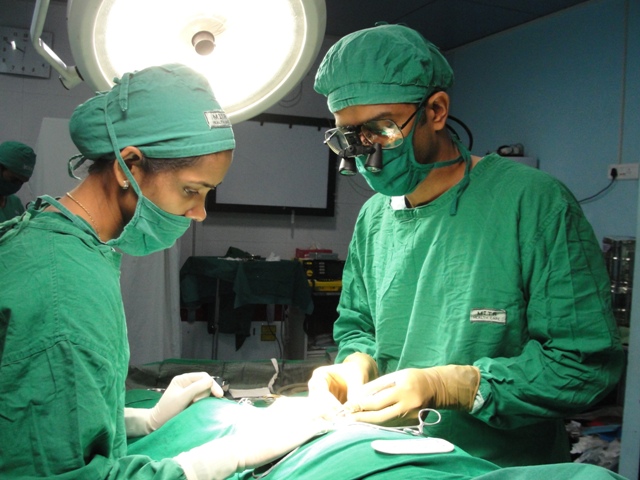Hypospadias Foundation starts Clinic for Hypospadias Treatment & Surgery in Bahrain
Hypospadias is a common urological problem seen in children. The characteristic feature in hypospadias is excess foreskin on the front side of the penis with absent foreskin on the underside with abnormal position of meatus. The common procedure for hypospadias involves using the excess foreskin on the front side of the penis to reconstruct the urethra(urethroplasty). Hence post urethroplasty the penis has a circumcised look.
One of the most frequent questions which Parents ask is – Can the foreskin be reconstructed and retained during urethroplasty and avoid circumcision?
Well the answer is not so straightforward. Traditionally hypospadias repair aims at bringing the meatus to the tip with circumcision as a part of the procedure. But in some cases, with newer techniques, preservation of prepuce is a possibility but not in all the cases.
Case selection is crucial when we consider foreskin preservation and reconstruction (preputioplasty) because it is associated with its own set of complications. Expectation of parents should be discussed prior to considering this procedure. The ones who do not want a circumcised look of penis for their child, we tend to offer prepucioplasty provided the procedure is possible. Hence in a few selected cases of hypospadias circumcision may be avoided. We at hypospadias foundation have operated a few cases of distal hypospadias and foreskin reconstruction(prepucioplasty) was successfully done in these children.
Here are some of the common questions/answers about foreskin reconstruction which will help the parents to know more about foreskin reconstruction in hypospadias.
- What is the procedure of foreskin reconstruction?
Reconstruction of foreskin is called “prepucioplasty”. Following urethra reconstruction- “urethroplasty”, the prepuce is incised and closed in 2 layers- outer and inner skin separately.
- What is the procedure done when we do not want foreskin reconstructed?
When prepucioplasty is not possible we rotate the excess foreskin from the front side of penis and use parts of it to reconstruct the urethra(urethroplasty). Following this procedure, the penis looks circumcised.
- Which cases are ideal for foreskin reconstruction?
Children with minimal defect of foreskin on the underside of penis, distal hypospadias with no abnormal curvature (chordee) of the penis can be offered foreskin reconstruction. This procedure can be considered in parents who want to avoid circumcision for their child.
- When do we avoid foreskin reconstruction?
Pre- operatively if the hypospadias is of moderate or severe type and if the foreskin defect is significant then we do not consider foreskin reconstruction. During the surgery if the curvature of the penis(chordee) is found to be significant we tend to avoid prepucioplasty.
- What is the postoperative follow up in cases of foreskin reconstruction?
Following foreskin reconstruction in hypospadias, the catheter will stay for 7-10 days. During follow up, we advise the parents to gently start retracting the prepuce after 3 weeks and apply a lubricating antibiotic gel. We advise parents not to retract the foreskin at home in the initial few weeks. Following 4 weeks after surgery, we advise application of a steroid cream for a period of 4 weeks to prevent secondary adhesions.
- What are the complications of prepucioplasty?
Prepucioplasty is associated with its own set of complications. Early complications of prepuicoplasty involves prepucial dehiscence or incomplete retraction of the prepuce. Late complications involve secondary phimosis. Developing a fistula is also a known complication because of inability to provide dartos cover for the urethroplasty.
Here are the pre- and post-operative images of Master AP, 7-month child who underwent distal hypospadias repair with prepucioplasty.

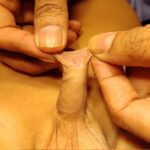
Notice the ventral defect in prepuce is small in this case of distal hypospadias
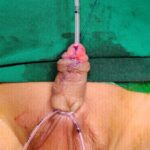
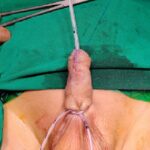
Completed Foreskin Reconstruction (prepucioplasty)
About Hypospadias Foundation:
Hypospadias foundation is a centre which provides personalized care for children and adults with hypospadias. It is the best hospital centre in India and world for surgical treatment for hypospadias in adults and children. Our dedication in the field of hypospadias has helped us achieve excellent outcomes in these patients. We treat children and adults not only from various parts of India but also from more than 25 countries all over the world. Hypospadias foundation is located at MITR hospital in Kharghar, Navi-Mumbai, Maharashtra, India. Every year more than 200 surgeries of hypospadias are performed at MITR hospital.
Dr A K Singal and Dr Ashwitha Shenoy are expert surgeons for Hypospadias in India. Working together as a team they have achieved excellent outcomes in primary and failed hypospadias in children as well as adults.
For appointment with Dr Singal or Dr Shenoy, kindly contact us at the contact details given below.
MITR hospital & Hypospadias Foundation, Kharghar, Navi Mumbai, India- Call for appointments: +91-2227743558/ 27744229/ 39/69 and +91-9324180553.
MITR Clinic: C1/8 Ground floor, Sector-2, Vashi, Navi Mumbai, India – Call: +91-9324502572



